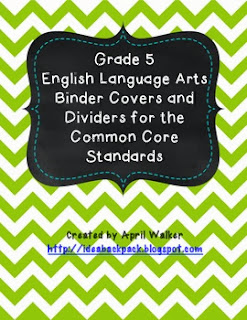One of my goals this week was to really re-evaluate my Language Arts block. I have found a lot of great resources lately, and I have been struggling to figure out how to fit it all in. It just all seems important! I definitely still need to rework my scope and sequence for the year to really plan out week by week the Grammar lessons and reading skills for read alouds. One of the hardest parts to me of planning for the Language Arts block is planning the schedule and how much time to allocate to different tasks. On Tuesday, I am going to share with you how I decided to re-allocate time in my Language Arts block to better allow for student engagement and ownership. Over the next couple days, I am going to share some of my favorite Language Arts resources I have found for Common Core.
As you probably know by now, Monday and Tuesday are the big Teachers Pay Teachers Cyber Monday and Tuesday Sale. You can save up to 28%. I think I have over $100 of items in my cart right now. A good sale is the perfect opportunity to stock up on all those items you have been wanting. My store will be 20% off. You use the code CYBER to save more at checkout.
Here are some of my favorite resources for the Common Core Language Arts Standards:
Resources I have Made:
First of all, I organize all of my Language Arts resources for Common Core by standard. I put all the resources I have made or purchased behind each standard. It makes it so much easier when planning to have everything in one place. These are my Grade 5 Binder covers and dividers.

I use my Grade 5 Common Core Reading Literature graphic organizers for whole-group lessons and also independent activities. They also work well for Guided Reading.
These are my Writing Graphic organizers, checklists, and rubrics for multi-paragraph writing:
These are my Writing Graphic Organizers, checklists, and rubrics for writing one paragraph:
These are my 25 posters for Theme. We use the list of themes and messages as reference when discussing stories. It helps to scaffold instruction as students work to identify theme.
This 2014 Writing Calendar makes a great monthly writing practice for the year, but it also can be turned into a calendar as a gift for parents. We made these last year, and they came out super cute. I just updated the file to include the calendars for 2014.
Resources I have Purchased and Use Often:
Lately, I have really been convicted of how much kids need spiral review in Language Arts as much as Math. They need to continually practice reading skills, writing skills, grammar skills, Figurative Language, typing, cursive, etc. Thus, I am trying to build time in my Language Arts blocks to weekly review all of these skills.
- Panicked Teachers' Language Weekly Skills Challenge: We will use these on Fridays. These will be a great way to review figurative language. We are going to be working on Figurative Language in December, so these will be a great way to review the rest of the year.
- Panicked Teachers' Simple, Compound, and Complex Sentences: Sentence Stretching Unit: I have decided to just start purchasing some of the great independent units sellers have created for teaching different concepts. Sometimes you just don't have time to create everything yourself. I love the posters in this set!
- Lovin' Lit's Reading Notebook: I am excited to start using these in whole-group and small-group lessons.
- Ashleigh's Spiral Language Review: For now, we are focusing on the 4th grade skills before covering the 5th grade Language skills.
- Mandy Neal's Common Core ELA Assessments: I have grades 4 and 5. These are so handy!
What are your favorite Common Core TpT Language Arts resources?





















